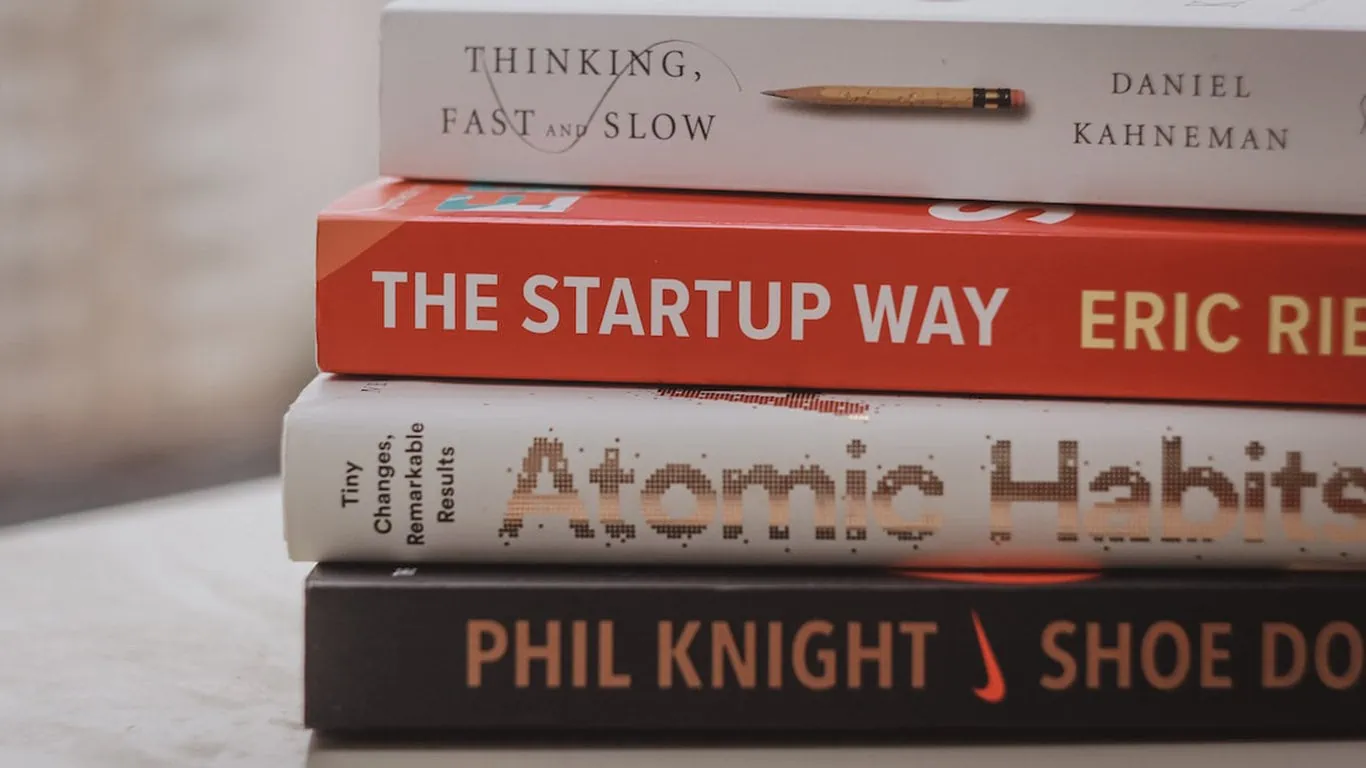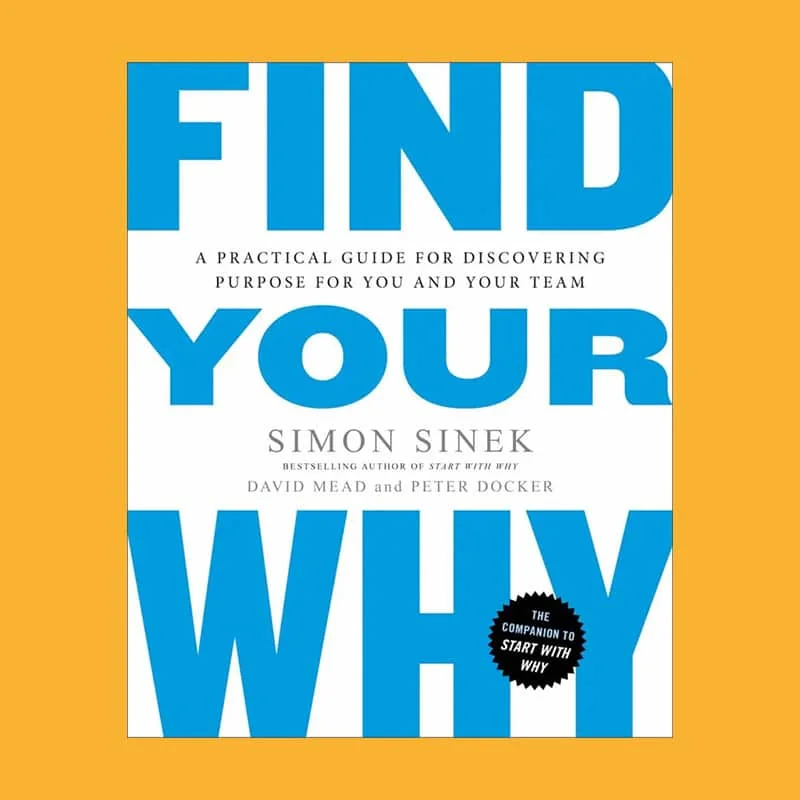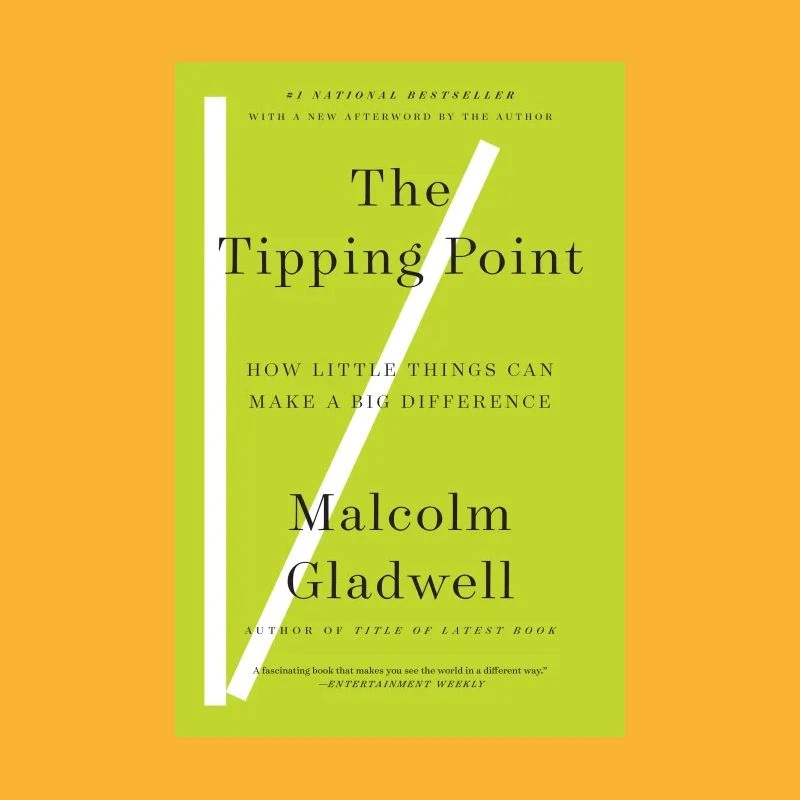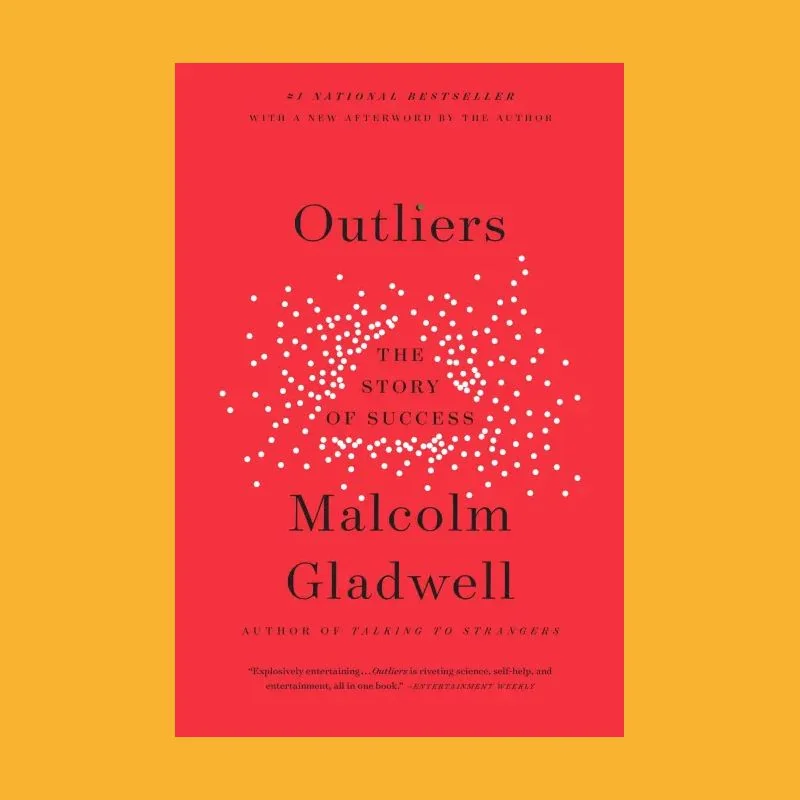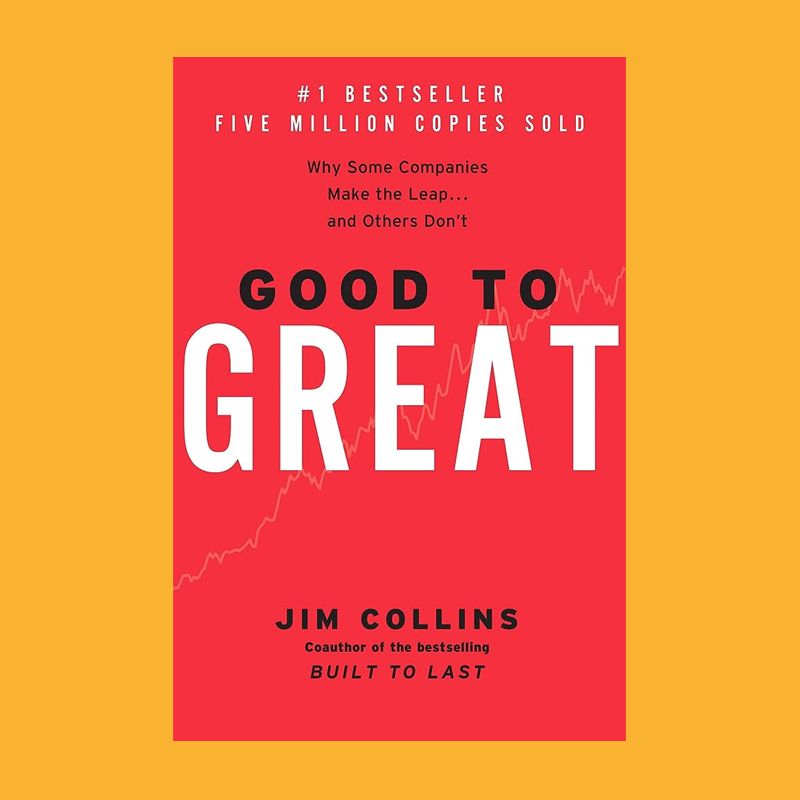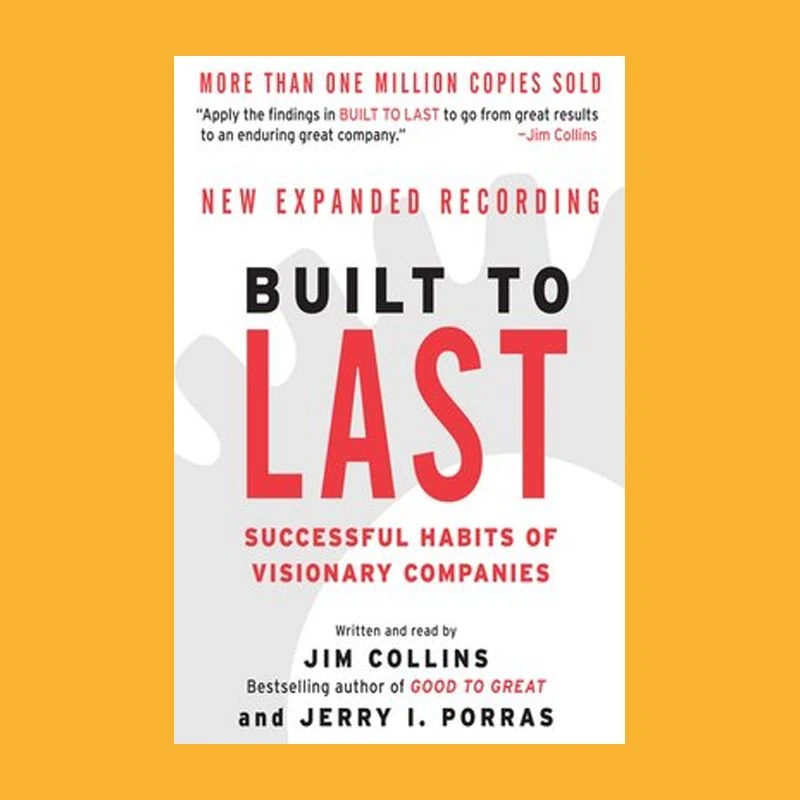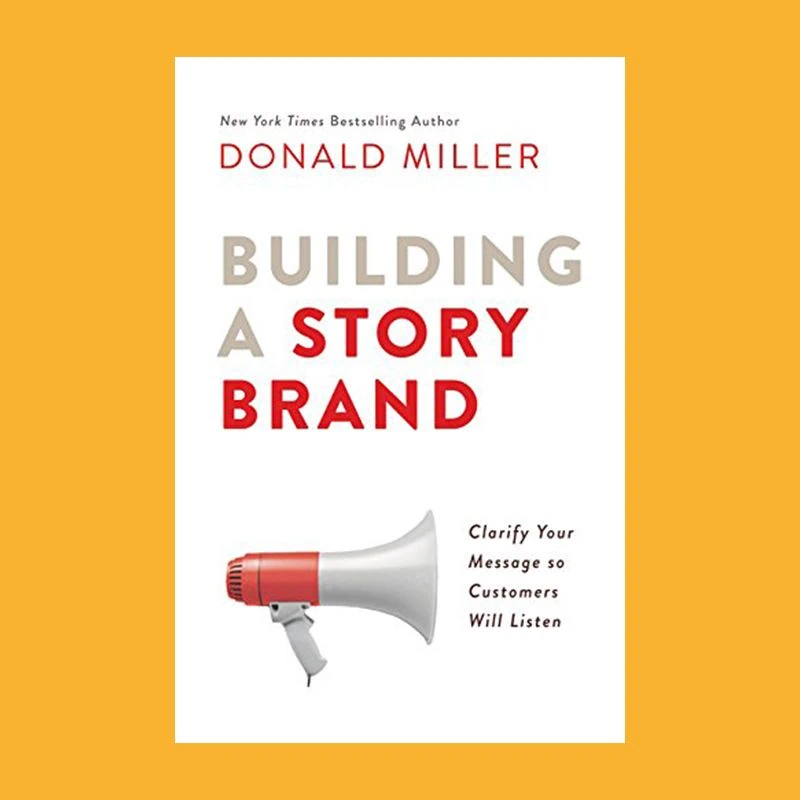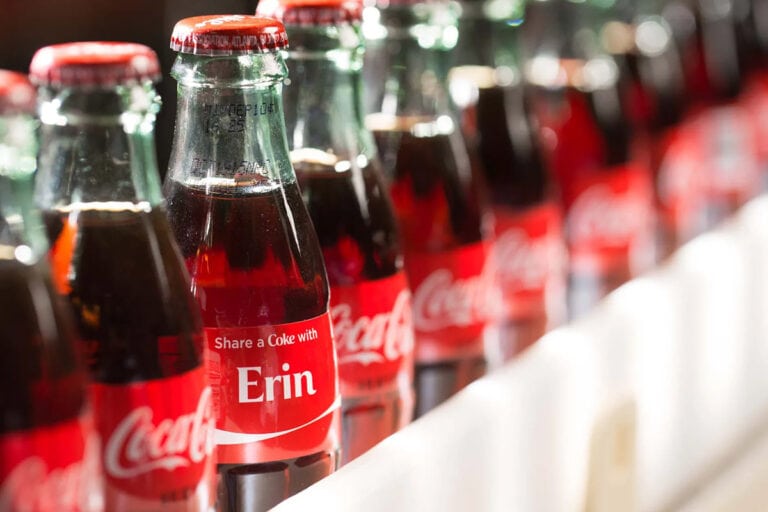Top 10 Best Branding Books To Read for Inspiration in 2024
Over the last 25 years, I’ve read my fair share of branding books. While some are timeless, some need to be updated and more helpful in today’s marketing landscape. You should remember that branding started popularizing in the late 80s and early 90s.
This was when brands like Apple started leading the way with messaging and advertising focused more on brand values than product features. It seemed counterintuitive at the time to have a front-page ad in a magazine that never once showed the product, but to their surprise, it worked.
When I started in the industry, one of the first books I was recommended was “The 22 Immutable Laws of Branding,” At the time, it served as a bible for many of us.
The examples and anecdotes it provided were simple and compelling, like a combination of some zen philosophy and a branding or dummies book. One of the biggest reasons it was so popular and valuable was because you could so easily repeat them to clients as a basis for your reasoning, and they would take it as fact. Add the words law and immutable, and suddenly, it’s gold.
Many valuable lessons can be learned from these books; however, once the aura of their simplistic power passes, you begin to question some of these supposed laws.
If a law is immutable, how come I often think of successful brands that outright contradict these laws? That is because as time passed and new technologies were introduced, they changed how people became aware of brands and consumed marketing. With that, many brands began to break many of these immutable branding laws and common sense thinking.
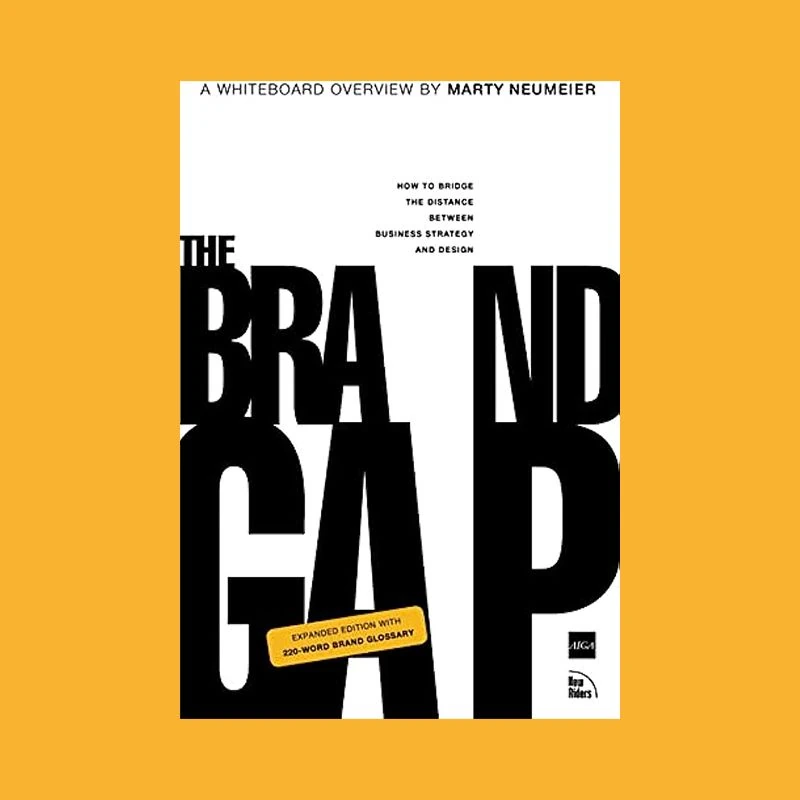
Essential Reading
A great fast read to get a bird’s eye view of branding.
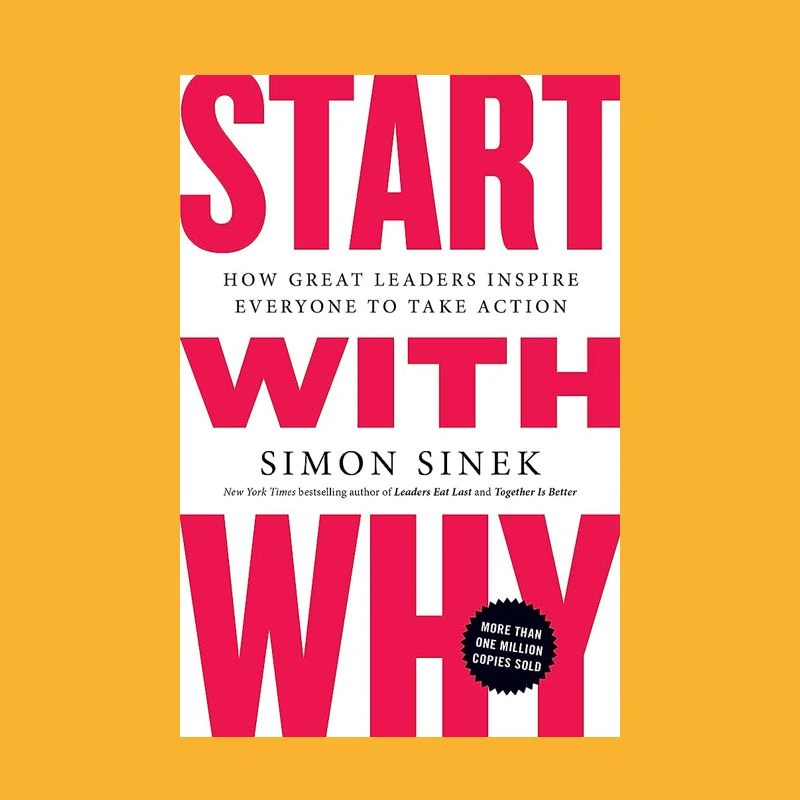
Best Starter
First easy step you can take to start your branding journey.
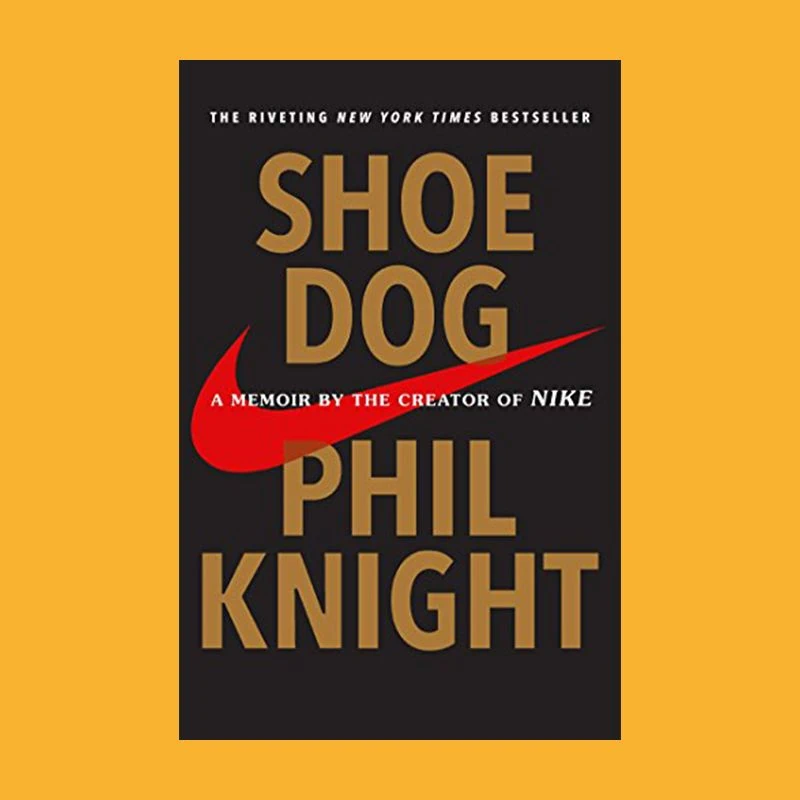
For Mindset
Take a walk in the shoes of someone who’s built a brand.
So, I’ve picked out some books essential to setting a proper mindset to start working on your brand. Many of them are practical and actionable; others are more philosophies and unique experiences that can help you see the enormous diversity of how some of the biggest brands have approached branding.
Then, you’ll need to put in the effort to do some reading to get a real grasp of what works, what doesn’t, and what may work under certain circumstances.
Here’s the tip: If you are busy like me, you only sometimes have the time to read. There is nothing wrong with listening to audio versions of the branding book. If you need a subscription. You can try out Audible today for free and start listening today.
Don’t have time to read or listen? You can get some inspiration from the Top 45 Inspirational Branding Quotes, many of which are from these same authors. Check it out.
Why are these The Best Branding Books to Read?
Every branding book I recommend is one I’ve read or have listened to the audio version of often more than once, some 3 to 4 times over. I wouldn’t suggest them if I didn’t think they were profound and mind-changing, so just knowing that you are open to learning more and accepting that you might not know all the answers yet is one of the first steps, so good job.
While there are branding books that seem like blueprints to successful branding, take the case studies as something other than something absolute that, if you follow step by step, will make your brand successful. It is all about understanding the core principles and having the right mindset to develop your brand fundamentals and strategies.
1. The Brand Gap by Marty Neumeier
Branding Essential Reading (At Most Schools)
Neumeier’s books have been considered essential reading for a couple of decades for anyone interested in branding, and the key reason is they help shed light on the overall landscape of branding. You’ll get a detailed understanding of the essence of branding and how it differs from business strategy and marketing.
The Brand Gap is considered essential reading because it’s a good way to get a brief history of why branding matters, when it began to matter, and how it matters. You’ll learn some of the keywords that most branding people already know well or that you’ll likely hear repeatedly, like differentiation, cultivation, etc.
- Simple and easy overview of what branding is.
- Reveals common misconceptions about branding, such as the importance of emotions.
- Presents five disciplines of branding that are very high level.
- Provides valuable insights and examples on each discipline.
- Engaging and easy-to-read style.
Here’s what people are saying about The Brand Gap:
- “Neumeier reminds us that the ultimate moment of truth for all brands is the customer’s experience.” —Kurt Kuehn, VP of Worldwide Sales and Marketing, UPS.
- “The book slices like a hot knife through the turgid, pseudo-scientific nonsense that surrounds branding.” —Brian Collins, founder of Collins
What I Like/Dislike About The Brand Gap:
Like:
- Although it’s over 200 pages, it reads through quickly since it’s pretty small, with large print and many well-thought-through illustrations.
- Although brand names and logos are not the most important aspects of branding, it is often why people begin to entertain the idea of branding, so this book at least offers some perspectives on both and how they are essential.
- It really helps people grasp the true value of an authentic brand. That a brand is a brand once it surpasses a certain threshold, and that gap is wide and challenging.
Dislike:
- Some of you will feel the book is too short and lacks depth.
- Some of you may find the book too simplistic and not suitable for those in marketing, advertising, or design fields.
Overall, I recommend The Brand Gap as my #1 essential read book for brand directors and entrepreneurs serious about branding and marketing.
2. Start With Why by Simon Sinek
Overall Best Branding Book To Start With
If there is one book I’ve probably bought multiple copies of and given away to others as recommended reading, it is this book.
The reason is that it’s a super simple concept. Still, Sinek also does a great job of relating it to other aspects of life not directly related to branding to help the reader grasp the idea.
The principle is also so simple that rather than think of the hundreds of things to consider with branding. He only asks you to consider one thing first: Why are you doing this?
Why is your product or service important? Why should they choose you? It does feel more of the same after the 3rd chapter, so read it all if you want, or just read up to the point where you have a firm grasp on the concept.
Start With Why is the best practical and straightforward branding task you can take on. It’s also my first choice, depending on who I recommend a reading suggestion to.
Often, they are people who don’t know anything about branding or perhaps don’t even see value in branding.
This book is a great, simple way to get their gears clicking on why branding is important, why branding makes a difference, and why they should start thinking with a branding mindset.
- Insights into a unique leadership style.
- It will feel revolutionary for brand novices.
- Applicability to various fields beyond the brand, such as products and services.
- Engaging storytelling through case studies
- Inspirational and motivating
I think this TED talk that Simon Sinek gave provides a great introduction to his principle of why people should “Start With Why.” You’ll nod your head in agreement throughout most of it.
Here’s what people are saying about Start With Why:
- “Each story will force you to see things from an entirely different perspective. A perspective that is nothing short of the truth” —Mokhtar Lamani, former ambassador and special envoy to Iraq
- “Start with Why is one of the most useful and powerful books I have read in years. Simple and elegant, it shows us how leaders should lead.” —William Ury, coauthor of Getting to Yes.
What I Like/Dislike About Start With Why:
Like:
- It’s a simple concept and task to ask anyone to consider. The case studies offer examples of why others are successful and their “Whys” so you can have a path towards crafting your own “Why.”
- The book introduced novel ideas about the importance of “WHY” in leadership, making you rethink traditional business, education, and political approaches.
- The book’s principles are relevant in business and my personal life, education, and political systems, making it widely applicable.
Dislike:
- The book may feel redundant since it repeats and reiterates the same concepts. Still, then again, there is really only one concept here, which is why you should start with why so you may feel like, “I got it after the 2nd or 3rd chapter,” and that is true if the first two chapters are enough then that’s fine, what is important is just grasping the concept.
- The book heavily relies on a small set of stories (e.g., Apple, Walmart, MLK) and needs to explore more diverse and nuanced examples. Still, it’s understandable since they are considered keystone brands that everyone knows.
Overall, I recommend Start With Why as my #1 best starter book for brand directors and entrepreneurs serious about branding and marketing. Still, it is also an excellent starter for anyone who wants to understand why branding matters.
3. The Tipping Point by Malcolm Gladwell
Best Branding Book For Out Of The Box Mindset
The Tipping Point was the first Malcolm Gladwell book I read, and then, of course, his book Outliers made me a devout fan of all things Gladwell.
In terms of writing, he is one of the best storytellers out there, and his ability to connect the dots between broad concepts is simply amazing. It becomes easily engrained in the reader’s mind.
The key takeaway, just like it was in Outliers, is that success rarely comes from one simple thing but a culmination of things, time, place, events, etc., that can get brands to that tipping point where they suddenly start moving towards success.
The Tipping Point offers many case studies, and even though some are well known and others obscure, they can help the reader see the correlation and sometimes causation between success and failure.
Gladwell is also a master at conveying the same concepts through numerous lenses. Sometimes, these different perspectives converge, which helps the reader begin to think more broadly about the entire cultural landscape rather than the narrow, completive view.
- Hard to put down
- Insightful analysis
- Engaging storytelling
- Practical applications
- Thought-provoking and eye-opening
Gladwell is one of those guys you know who does his homework, but even more so, he’s looking for an A++. Often, his books read like an investigative journalistic editorial where he and the readers are on a journey to uncover a mystery.
He’ll often ask the same questions we are asking ourselves as we read along. Look at this clip of him discussing it with his passion and zeal.
Here’s what people are saying about Start With Why:
- “The Tipping Point provides some profound suggestive arguments and insights… Fascinating.” —Sunday Telegraph
- “Gladwell gives ideas about the quality of action. Here he’s written a wonderful page-turner about a fascinating idea that should affect how every thinking person thinks about the world around him.” —Michael Lewis, bestselling author of Moneyball, The Blind Side, and The Undoing Project.
What I Like/Dislike About The Tipping Point:
Like:
- It’s one of those great reads where you don’t want to put it down. You want to plow through it like an engaging fiction story. Only everything is real and actually happened.
- The book’s exploration of tipping points and the factors contributing to social epidemics was thought-provoking and illuminating, offering a fresh perspective on how ideas spread and trends emerge.
- Malcolm Gladwell’s storytelling style makes complex concepts accessible and enjoyable to read, using relatable examples to explain the dynamics of tipping points in various fields like fashion, health, education, and crime.
Dislike:
- Some of you may find that it is not easy to understand how certain events led to tipping points because he (probably due to journalistic integrity) can’t say for certain what exactly happened but only hypothesizes that several key events could have all led up to the tipping point for some brands.
- You may find that many things seem out of their control, such as with the rise of Hush Puppy shoes and other successes, and wonder how you can control something you have no control over.
Overall, I recommend The Tipping Point as my #1 out-of-the-box branding book for brand directors and entrepreneurs who are serious about branding and marketing because it helps people begin to grasp the idea that branding success is not simple but often caused by many different things all coming together at the right place and time and that sometimes it’s out of your control.
Because of that, the best ways to think about your brand are sometimes far outside the traditional paths. Consider things like science, psychology, sociology, and so on to craft your brand strategy.
It is also great to pair this book with his follow-up book Outliers, which complements this concept because it helps you understand the importance of time and place. Often, people look to big brands as a blueprint for success. Still, they forget that time, place, and special opportunities often catalyze success.
4. Good to Great by Jim Collin
It’s a Bit Old But Still Has Valuable Lessons and Examples
If there was one takeaway from this book, one of the foundations of a great brand is to have a great organization. It stresses the value of having the right people relentlessly focusing on a company’s core mission. It is challenging to have a great brand if you have a great culture that brings in the right talent and empowers them to develop the right products at the right time.
As I read this book, I couldn’t help but think: “Um, Circuit City became a total failure, so should I ignore this book?” However, while they aren’t aspirational brands like Apple and Nike, many of the brands are the stable, tried, and true goliaths of their industry. This kind will stand the test of time for centuries to come, so while their names might not seem impressive, their businesses are.
- In-depth research
- Clear framework
- Insightful concepts
- Real-life examples
- The engaging and practical writing style
Jim Collin’s case studies showcase how various companies transformed themselves from good to great through disciplined leadership, strategic choices, and fostering a culture of excellence. While each company’s journey was different, they all shared common principles that contributed to their enduring success: disciplined people lead to disciplined thought and action.
Here’s what people are saying about Good to Great:
- “A book CEOs can’t wait to buy” —USA Today
- “Collins and his research team have been tackling one of the biggest questions business has to offer.” —Fortune
What I Like/Dislike About Good to Great:
Like:
- I appreciated the extensive and well-documented research conducted by Jim Collins, which involved a five-year study of 28 companies in uncovering the critical components that transform a good company into a great one.
- The book is structured with three key stages—Discipline People, Discipline Thought, and Discipline Action—each containing two critical components. This framework made it easy for most people to understand and apply the concepts presented.
- The book introduces thought-provoking concepts, such as Level 5 Leadership, First Who… Then What, Confront the Brutal Facts, The Hedgehog Concept, Culture of Discipline, and Technology Accelerators, which resonated with most people and provided valuable insights.
Dislike:
- The book’s research and examples were based on a specific period characterized by a unique economic climate that could make it feel dated.
- You may find some examples shortsighted since some of the brands have faced decline more recently. However, I have to say the title isn’t “Good to Great Forever.” It’s just how to go from good to great; it’s up to you after that.
Overall, I recommend Good To Great as one of the best branding books. While it may be dated, I still found some concepts and examples relevant. I’m still familiar with many of the brands he covers, such as Circuit City or Pitney Bowes, and I can see how it might go over the heads of those who don’t know the brand well.
One example mentioned in his other book, “Built to Last,” was the story of “The HP Way.” Sure, HP has had its ups and downs, and whether they still live up to the tenants of the original “HP Way” doesn’t mean they weren’t important tenants, to begin with.
You have to remember that HP was so inspiring for its time that it was a huge inspiration to other Silicon Valley brands, such as Apple and Google, who were profoundly influenced by HP.
5. Building A Brand Story by Donald Miller
Great For Helping To Formulate Your Brand Identity
I’ve always thought of the great brands I’ve worked with emotionally. When I craft a story around the brand, it makes it easy to remember and tell repeatedly.
Only when you achieve this can you speak passionately about a company’s brand in a way that draws people in and leaves them with something unforgettable.
That is what this book helps you to understand and develop for your brands with practical tips and real-life examples. The book provides a step-by-step approach to crafting a brand story that resonates with your target audience.
Building a Brand Story is a guide that reveals the power of storytelling in creating a solid brand. Miller, a successful author and entrepreneur, highlights the significance of compelling narratives in engaging customers, fostering brand loyalty, and driving business growth.
With practical tips and real-life examples, the book offers a step-by-step approach to crafting a brand story that connects emotionally with the target audience and helps businesses thrive in today’s competitive market.
- Provides a compelling storytelling framework
- Impactful guidance for content creators
- Profound understanding of brand purpose and message
- Inspirational and confidence-boosting
- A step-by-step guide with practical tools
Whether a startup or an established brand, “Building a Brand Story” provides valuable insights for differentiating oneself and leaving a lasting impression in customers’ minds. By emphasizing the importance of storytelling, Miller’s book offers a powerful tool for anyone seeking to create an impactful brand story that resonates with customers and stands out in the crowded marketplace.
This scene from Mad Men always reminds me of the value of storytelling, and it’s the same way I approach my presentations today.
Here’s what people are saying about Building A Story Brand
- “This is a seminal book built around the idea that will clarify, energize, and transform your business. Donald Miller offers a specific, detailed, and useful way to change the way you talk about the work you care about.” —Seth Godin, bestselling author of All Marketers Are Liars and Purple Cow
- “Donald Miller will teach you a lot more than how to sell products; he will teach you how to transform the lives of your customers. Your customers need you to play a role in their lives, and this book will teach you how. If you want your business to grow, read this book.” —John C. Maxwell, #1 New York Times bestselling author
What I Like/Dislike About The Building A Story Brand:
Like:
- I appreciated the clear and actionable storytelling framework outlined in the book, which helped them craft compelling and engaging brand messages.
- The book can be incredibly helpful in guiding content creators toward success by enhancing their storytelling skills, which may lead to increased engagement and stronger connections with their audience.
- The book can help people understand their brand’s purpose and message, improving customer communication.
Dislike:
- You may feel that the book Miller’s live courses and online programs, which feels like it dilutes the value of the content, but I try to ignore it.
- I found the book to be repetitive and filled with unnecessary filler content, making it feel drawn out and challenging to maintain their interest, especially in the audio version at times when I was falling asleep.
Overall, Building A Story Brand is one of the best branding books for changing your mindset about how you think about your business and creating brand identity by having an excellent, compelling story to tell. Often, we jump into what the products are. While products might have differentiation, our personal story is a stronger emotional connection that is often more meaningful to customers and often can align with them personally.
6. Shoe Dog by Phil Knight
Real Example Of Branding Driven By Passion
I found this book completely enthralling. It is a fantastic story of inspiration, determination, devotion, and passion for the industry.
One of the most inspiring aspects of the book was that his road to success was not a walk in the park. In many of his desperate situations (tipping points), I felt the same way with my past and present brands. It’s relatable and inspiring, especially for those starting their brands.

“Shoe Dog” is a memoir by Phil Knight, the co-founder of Nike, chronicling the challenging journey of building the iconic sports brand. From the humble beginnings of Blue Ribbon Sports to the transformation into Nike, Knight shares the personal sacrifices, financial struggles, and moments of doubt that accompanied his entrepreneurial pursuit.
The book portrays the unwavering passion and relentless determination that allowed Nike to become a global powerhouse in the athletic footwear industry, offering a gripping and heartfelt account of the trials and triumphs of entrepreneurship.
- Entertaining and captivating storytelling
- Fascinating insights into the founding of Nike
- Inspiring and motivating
- Lessons on risk-taking and resilience
- A genuine and honest portrayal
In “Shoe Dog,” Phil Knight provides candid insights into the early days of Nike, highlighting the unwavering belief in sports and innovation that drove him and his team. From overcoming international challenges to securing iconic endorsements, the book captures the entrepreneurial spirit that propelled Nike’s success while emphasizing the importance of perseverance and staying true to one’s vision.
Here’s what people are saying about Shoe Dog:
- “Shoe Dog is a great American story about luck, grit, know-how, and the magic alchemy of a handful of essential characters who came together to build Nike. That it happened at all is a miracle because, as I learned from this book, though we are a nation that extols free enterprise, we also excel at thwarting it. The lessons Phil Knight imparts about entrepreneurship and the obstacles one faces in trying to create something are priceless. The pages I fold down are too many to mention.” —Abraham Verghese, New York Times bestselling author of Cutting for Stone.
What I Like/Dislike About Shoe Dog:
Like:
- I appreciated the determination, hard work, and passion displayed by Phil Knight and his journey to build Nike. He’s the best friend everyone needs.
- The book is a valuable lesson on successful risk-taking and how resilience and determination were crucial in building an empire like Nike’s.
- I appreciated Phil’s honesty and humility, making the story relatable and inspiring. He’s not some CEO with everything planned out perfectly; he was living on the edge like the rest of us.
Dislike:
- There is nothing to dislike about it since it is his story, and you have to take it as it is and appreciate his experience.
Overall, I recommend The Shoe Dog as one of the best branding books because it hits at the heart of some of the struggles many entrepreneurs and branding people often face.
One part of the book that I found both hilarious and insightful was how they came up with the name Nike. Just realized how it came about quite randomly but was based in some genuine relation to his original vision. Yet, Nike was a runner-up to the name “Dimension Six,” which could have ended up as the brand we know and love today.
7. Steve Jobs by Walter Isaacson
Learn From The Brand King Himself
Steve Jobs, one of the most significant branding minds ever, created one of the world’s greatest, most beloved, most recognized, and timeless brands today.
It is a hefty read since most of it is about his life. Still, you can learn so many key insights from how he dealt with certain products and specific times that really change how you might think or approach your products and brands.
It comes down to his commitment to perfection, which was driven to provide a perfect product to customers and for the sake of an ideal product. Jobs was driven by a purpose that was much higher than profits but in pursuit of ideals.
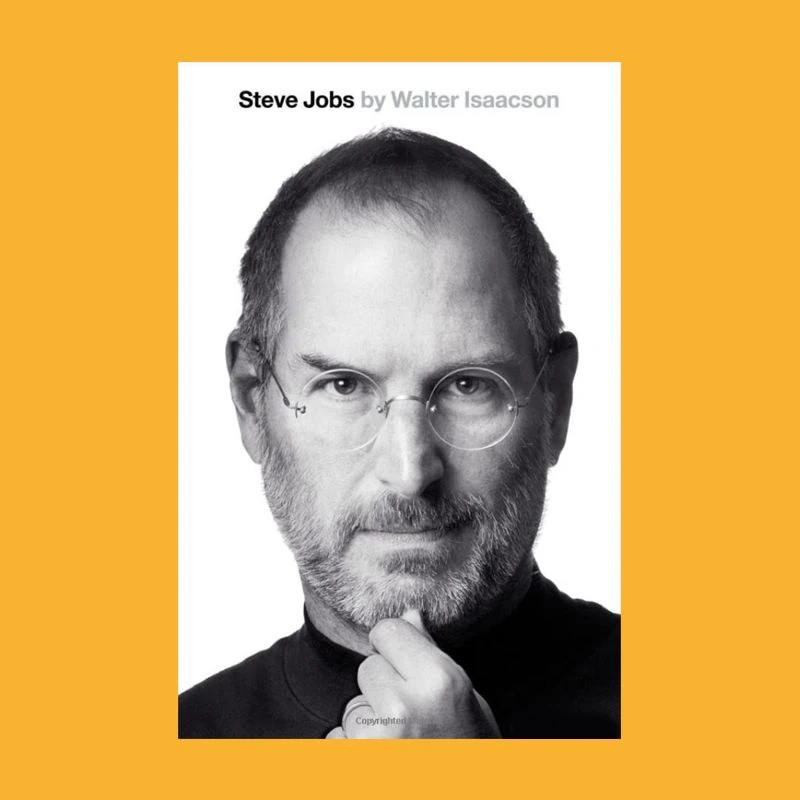
Walter Isaacson’s biography “Steve Jobs” offers an intimate and revealing portrait of the co-founder of Apple Inc. The book chronicles Jobs’ extraordinary life, from his early days as a young tech prodigy to his pivotal role in revolutionizing the technology and entertainment industries. Isaacson delves into Jobs’ complex personality, showcasing his visionary brilliance and often ruthless and demanding nature.
- Comprehensive coverage
- Insights into a complex personality
- Business and tech history
- Inspirational and thought-provoking
- Engaging writing style
Through extensive research and interviews with Jobs himself and those who knew him well, the biography explores the creation of Apple, the development of iconic products like the Macintosh, iPod, iPhone, and iPad, and Jobs’ personal struggles and triumphs.
Ultimately, “Steve Jobs” provides a comprehensive and compelling narrative of a man who reshaped the world through innovation and creativity while leaving an enduring legacy in technology and design.
What I Like/Dislike About Steve Jobs:
Like:
- The book provided valuable insights into the rise of Apple, the tech industry, and Silicon Valley’s evolution over the years, making it a biography and a history book.
- I found the book inspiring, depicting Jobs’ determination to create innovative products that shaped the world. It encouraged me to think about my impact on the planet and ask myself what my brand’s and higher purpose are.
- Walter Isaacson’s writing is organized, detailed, and engaging, making it easy to stay captivated throughout the book. No wonder Elon Musk is working with Isaacson to write his biography.
Dislike:
- There is nothing to dislike about it since it is his story, and you have to take it as it is and appreciate his experience just as it was with Shoe Dog. You can tell, and Isaacson also mentions how Jobs was determined to make it uncensored and to leave in everything good and bad.
- It’s minor, but as a branding book, you’d have to weave through all the biographies to get these glimpses of branding genius, but they are well worth it.
Overall, I recommend Steve Jobs as one of the best branding books because if you want to start thinking and acting like a real branding expert, it makes sense to learn it from someone many would consider the king of branding expertise, Steve Jobs himself.
Sure, he was considered a horrible boss in many regards. Still, his passion for the brand and product was one of the critical elements to Apple’s success and nearly everything he touched, including Pixar and NeXT.
This book gives you a more detailed glimpse into the inner workings of Apple or Job’s mind. Details of how some of the names, logos, and ads were created, how the products, usability, interface, and more were developed, why, even how the Apple stores were designed, and why they are the way they are.
8. Contagious by Jonah Berger
Understanding How Things Go Viral
I absolutely loved reading “Contagious” by Jonah Berger! The book provided a fascinating and insightful exploration of why certain ideas, products, or behaviors become viral and spread like wildfire.
Berger’s engaging writing style made complex concepts easy to grasp, and his use of real-world examples kept me hooked from start to finish. I appreciated how he backed up his theories with solid research and data, making the book informative and credible.
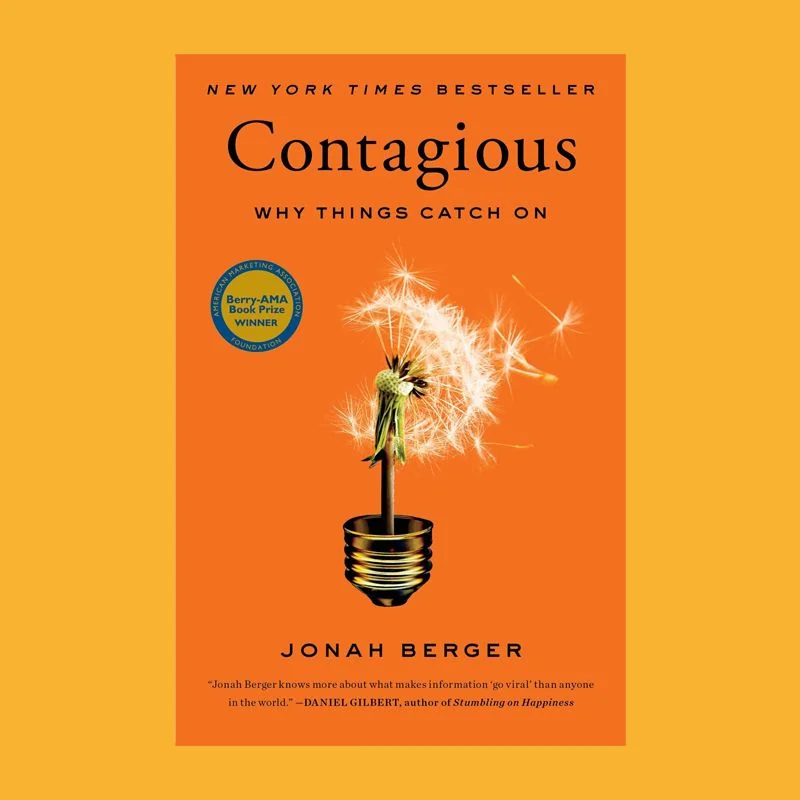
- Insights on Viral Marketing
- Practical STEPPS Framework
- Real-Life Examples
- Valuable Marketing Tips
- Engaging and Easy to Understand
Moreover, I found the book practical and applicable to my personal and professional life. Whether I wanted to create compelling content for my social media, boost my business’s visibility, or understand why certain things go viral, “Contagious” provided valuable insights and actionable strategies.
What I Like/Dislike About Contagious:
Like:
- The book provides deep insights into viral marketing. It explains that any product or behavior can go viral, dispelling the notion that only certain products are capable of becoming contagious.
- I appreciate the practicality of the STEPPS acronym (Social currency, Triggers, Emotion, Public, Practical value, and Stories), which helps them understand the key factors contributing to making products or ideas shareable and talked about.
- Using real-life examples throughout the book makes the concepts more relatable and engaging. I found it interesting to explore viral campaigns and their underlying strategies.
Dislike:
- Too much repetition of examples and anecdotes makes it feel repetitive.
- If you are looking for a how-to, this might seem too overgeneralized without particular actionable strategies you can follow immediately.
Overall, I recommend Contagious as one of the best branding books because most of us dream of overnight success. I’ve had my fair share of them, and they are great primers to get your brand jump-started, but throughout my experience, they are rare and even more challenging to sustain.
That doesn’t mean you should look for how to do it yourself. Still, all the other books I’ve recommended are about building a foundation that will help you capitalize on a viral boost if they happen to occur.
9. Delivering Happiness by Tony Hsieh
Learn The Importance Of Singular Visions and Culture
People often say developing a good brand name or logo is difficult. Still, many must realize it’s easier with a good culture.
A good culture is one of the most important brand touchpoints and is driven by a strong passion for the business, what it makes, what it does, and what it stands for. When those things align, everything else naturally tends to fall into place, much like it did for Zappos.
However, maintaining a good culture is one of the most significant challenges for brands today. Zappos was always touted as the model culture company, and this book gives us a glimpse into what made it so special.
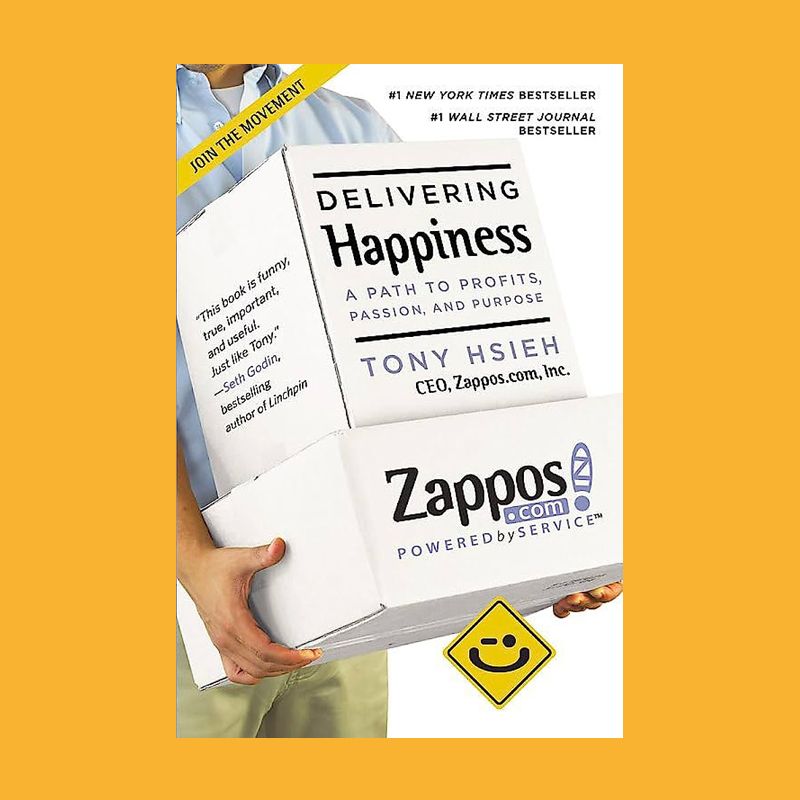
Tony Hsieh is quite an odd character, and how he is in real life really comes off vividly in this book.
The one copy of this book I got was handed to me by him personally at a startup event just months before it was released, so I still have so many memories of him telling me the same stories that he covers in this book.
The key takeaway is that many brands, like Apple or Google, are product-obsessed. Still, Zappos took a different route and focused on being customer-obsessed. Through that, they created a one-of-a-kind culture that ensured every customer was happy, even non-customers.
- Unique CEO Perspective
- Inspiring Success Story
- Emphasis on Employee Happiness
- Insights into Building a Strong Culture
- Applicability beyond Business
The read is unlike any other business book since it almost comes off as a casual chat. He includes so many quirky things, like complete emails that he shared with the company, narrative accounts from actual employees, and even a transcript of Jeff Bezos addressing the team after the acquisition by Amazon.
What I Like/Dislike About Delivering Happiness:
Like:
- Tony Hsieh’s approach as a CEO, focusing on Happiness, culture, and customer service, is what makes him different from traditional profit-centric CEOs.
- You get to see the complete journey of Zappos, from its struggling beginnings to becoming a successful and happy company.
- I loved the emphasis on employee well-being and how it directly impacts customer satisfaction, creating a positive work environment.
- You can learn a lot from his mistakes. One key takeaway from this book is “Never outsource your key competency.”
Dislike:
- Some employee accounts of their experiences are quirky and seem irrelevant, but some are profound.
Overall, I recommend Delivering Happiness as one of the best branding books because we’ve all heard the stories of how amazing Zappos is and how it was one of those unicorn acquisitions of our generation that everyone dreams about and few achieve.
From a practical point of view, you can learn a lot from Tony, such as how he created a business in which he had no interest or experience.
He just followed the numbers and used that to guide him. But where he needed to improve, he made up by changing the company’s focus away from the product to a higher level, focusing on customers and culture.
10. The Cluetrain Manifesto by Rick Levine
Learn The Importance of Market Interactions
I had just started my career in branding and digital marketing when I first read the original version of The Cluetrain Manifesto. It blew my mind, not because it was something new but something I had always believed in, and now others were supporting what I had already believed.
The raw, matter-of-factness in how it was written was captivating and exciting. It is true that their exclamation decades ago that “markets are conversations” still holds today and will likely still be the case, if not more, in the future.
As the Internet grows, information becomes more accessible immediately, and more brands can’t hide anything. Being honest and trustworthy has become the path many brands take today.
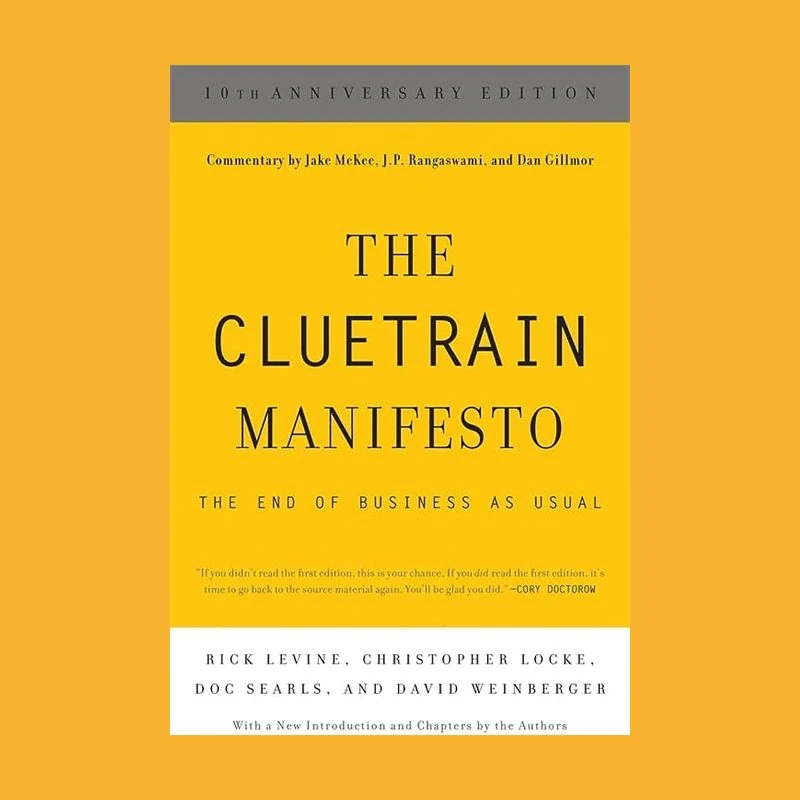
I like “The Cluetrain Manifesto” because it revolutionizes traditional branding techniques and strategies by emphasizing authentic communication and building genuine customer relationships.
The book argues that brands must engage in honest, human-like conversations that resonate with consumers’ values and beliefs in the digital age. Instead of relying on corporate speak and marketing jargon, the authors advocate for transparency, openness, and empathy as key drivers of successful branding.
This approach aligns with my belief that modern branding should prioritize meaningful connections, trust-building, and two-way communication to create loyal and passionate brand advocates. The Cluetrain Manifesto” is a wake-up call for businesses to embrace a more human-centered and socially conscious approach to branding.
- Describes every desired interaction with companies
- Emphasizes the importance of technology in customer interactions
- Highlights the relevance of the Internet in shaping businesses
- Advocates for a customer-centric approach
- Offers practical and timeless advice
Here’s what people are saying about The Cluetrain Manifesto:
- “You might not agree with everything these Web provocateurs say… but you will ignore their ideas at your own peril” —Fast Company
- “The pretentious, strident, and absolutely brilliant creation of four marketing geniuses who have renounced marketing-as-usual” —Wall Street Journal
What I Like/Dislike About The Cluetrain Manifesto:
Like:
- The book confirmed my longing for businesses to have an open and meaningful dialogue with their customers in the digital age.
- I appreciated the book’s advocacy for leveraging technology to engage in real customer conversations, making them feel heard and valued.
- The book’s insights on the Internet’s transformative power in revolutionizing markets and connecting people create an eye-opening experience for its time, but it is still relevant today.
Dislike:
- Some people might find it a bit preachy as if they are on their soapbox, which they probably were when people weren’t listening. Still, now reading it decades later, that seems obvious. But you have to remember that it wasn’t apparent years ago, and even today, people know what they should do, but they still need to do it.
Overall, I recommend The Cluetrain Manifesto as one of the best branding books because, at its core, a brand is a projection of not just a product or service but all the people involved. People grow and develop deeper connections with each other through communication and interactions.
For a brand to create a deep connection, it too has to have a certain presentation, live up to it, and prove it through these communications and interactions with customers and internally and externally with the world.
Bonus: No Logo by Naomi Klein
Learn How Brands Can Positively Shape The World
Before you start reading this, I must preface that the book is pretty dated, so the references are old. Times have changed, and some of those brands have made strides to change and do better now, so it might seem irrelevant from a practical point of view.
It’s also a pretty academic read, so people might find it more boring and less engaging than Malcolm Gladwell or Simon Sinek.
However, as a stickler for canon who can’t imagine starting a TV show in the second season, I recommend this as the first reading only to lead you into the more easily digestible Let My People Go Surfing by Yvon Chouinard and Naomi Klein.
However, skipping this and going straight to “Let my people go surfing” is fine if you want to see practical examples of how one company has transformed its brand.
I thoroughly enjoyed reading “No Logo” by Naomi Klein because it provided a compelling and insightful critique of consumer culture and the impact of branding on society. Much like The Cluetrain Manifesto, it is a thesis on corporate brands and how they can be and do better for consumers.
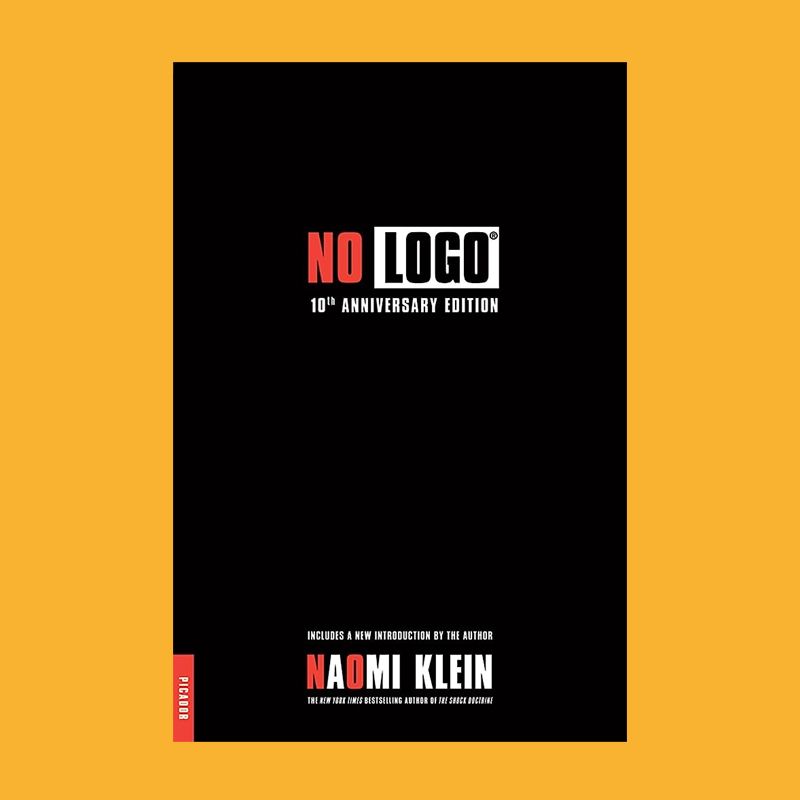
Klein’s meticulous research and compelling storytelling exposed the dark side of globalization, shedding light on labor exploitation, environmental degradation, and the loss of local identities.
By exploring the manipulative tactics of big corporations, the book empowered you to become a more conscious consumer. It encouraged you to support socially responsible businesses.
By that same token, as a brand, you must become a more conscious guide to creating a socially responsible brand. Overall, “No Logo” resonated with me as it exposed the excesses of corporate power and offered a hopeful vision for a more just and sustainable future.
You have to ask yourself, what is your brand doing right? Not right from a profit perspective but from a social and cultural perspective. Time and time again, these investments have created brands that don’t just grow independently but grow because their consumer base is growing by building a following of people who believe in what they are doing. They believe that you are doing everything in their best interest because you are.
- Extensive research
- Logical conclusions
- Eye-opening insights
- Engaging and accessible
- The social and political relevance
Here’s what people are saying about No Logo:
- “Klein is a sharp cultural critic and a flawless storyteller. Her analysis is thorough and thoroughly engaging.” —Newsweek.com
- “No Logo is an attractive sprawl of a book describing a vast confederacy of activist groups with a common interest in reining in the power of lawyering, marketing, and advertising to manipulate our desires.” —The Boston Globe.
What I Like/Dislike About No Logo:
Like:
- The book is highly praised for its thorough research, well-documented endnotes, and credible sources, which lend credibility to its arguments.
- I appreciate that the author’s conclusions are supported by the analysis presented in the book and are often drawn from other equally well-researched sources.
- The book offers thought-provoking insights into the workings of modern marketing, branding, and the manipulation of consumer behavior, shedding light on the tactics employed by the ruling class.
Dislike:
- The book’s main content has not been updated since the late 90s, leaving out crucial changes in the world, such as the 2008 recession.
- The book takes a one-sided perspective, heavily criticizing large corporations without giving much consideration to opposing viewpoints or acknowledging any positive aspects.
I recommend No Logo as my bonus branding book because brands and corporations must be more aware of how they affect and shape the world. More so today than ever before, brands have become big and powerful because they have become an integral part of people’s lives, and the trust brands build is a very personal one that can easily be shattered by dishonesty.
Bonus: Let My People Go Surfing by Yvon Chouinard and Naomi Klein
A good paring to this book would be Let My People Go Surfing by Yvon Chouinard and Naomi Klein, which really is a great singular case study of taking all the things Naomi Klein envisioned and then actually living up to it while steering clear of all the things to avoid.

Most of us know the impact a brand like Patagonia has made in its products and actions.
They are one of the pinnacle examples of a brand doing the right thing and not just saying it. What I also liked about this book is the Shoe Dog story by Phil Knight. It offers detailed narratives of the challenges it dealt with from both a brand and business strategy perspective and how it evolved into its current brand.
With my link below, you can get started today listening today.
Summary and Top Picks
I firmly believe that a brand is more than just a name or a logo and that it’s not something you create but something people, be it employees and consumers, create together as a complete view of what your brand stands for. Building a strong foundation is the key to a successful brand.
These books aren’t going to give you direct how-to steps to building a great, successful brand, but they are primers. A collection of ideas and philosophies that guide you towards formulating the essence of what your brand is all about.
Some key takeaways.
- There are no laws but some rules that tend to work out most of the time (you know those well you can’t go wrong with, but you might not be great with either)
- Every brand is unique, a product of time and place, so each has to be approached in special cases.
- Brands are more than just a name and logo. They are a vision, a philosophy, and a purpose.
- Branding fundamentals can help you build a strong foundation for your brand.
Ultimately, the critical factor is you.
The success of your brand is really up to you to live up to that vision of what the brand can and should be.
Here are my final top picks:
- Start With Why: Best Overall Starter
- The Tipping Point: Best for building a habit of reading non-fiction
- Building A Story Brand: Best For Beginners
Start With Why is just such a simple and easy read that you can start thinking about immediately and put into practice.
As I said earlier, you don’t have to finish the whole book; the many examples merely reinforce how you can start developing the “why” for your brand.
If you’re ready to start developing your brand today, I recommend you go with Start With Why.
I’d follow up with The Tipping Point to go deeper after that. While many of Gladwell’s examples aren’t directly related to branding, they can help you think about how they affect a brand because people, cultures, and brands are all intertwined and connected to each other.
Gladwell is also a great read, and if you look at any of his books, from Blink to Outliers and so on, there are always some insights related to brands and products sprinkled throughout his books.
Often, they are about the people behind the brands, and understanding the people is as important as understanding the brand. Often, the brand would be nothing if it weren’t for the people behind it. Want to be the next Bill Gates? His book Outliers might hint at what it takes.
If you don’t have the time to read, get the audiobook and listen to it instead on Audible.
Important Tips About Audible
1. Audible Premium Plus is better. Standard Audible Plus subscription and its free Plus Catalog of books usually don’t include new books or popular bestsellers.
2. Book a month. The books you select you keep forever. Books from the free catalog could be available now, but you’ll lose access once they cut it.
3. Only subscribers get access to crazy sales promos. If you have an active account during major sales periods like Black Friday or Holiday, they will offer promos for current subscribers that are insane, like a 12-month subscription for half price plus three extra book credits. You can only get these if you are an active subscriber.
4. Don’t subscribe on your mobile device. The last important note is to make sure you subscribe on a computer and not your mobile device since mobile device subscriptions, such as through iOS or Android, are excluded from major sales events and deals. (I had an entire subreddit about this with people dealing with the same issue.)
Editorial Process:
Our reviews are done by myself and come from my own experiences. I may not have used some products recently, so my reviews may reference details such as specifications and features that may have changed since I last used them. Let me know if you find any discrepancies.
Some of the links in this article may be affiliate links, which can compensate us at no cost if you decide to purchase a paid plan. These are products we’ve personally used and stand behind. This site is not intended to provide financial advice. You can read our affiliate disclosure in our privacy policy and editorial disclosure.

